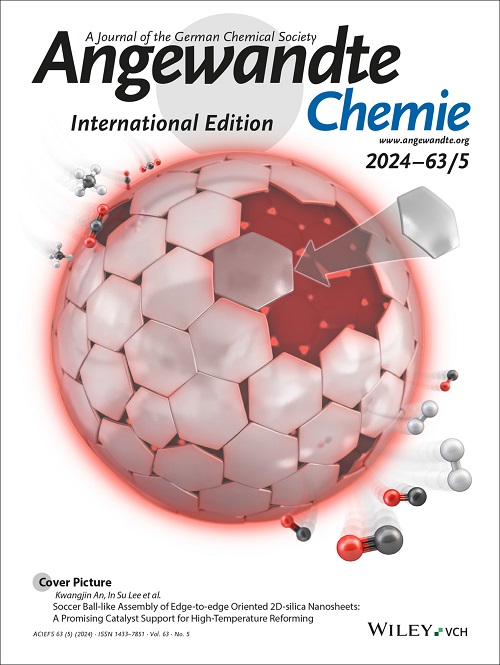Unusual MurC Ligase and Peptidoglycan Discovered in Lachnospiraceae Using a Fluorescent L-Amino Acid Based Selective Labeling Probe
IF 16.1
1区 化学
Q1 CHEMISTRY, MULTIDISCIPLINARY
引用次数: 0
Abstract
Developing selective labeling probes for specific bacterial taxa can not only facilitate the study of target bacteria but also deepen our understanding of the microbial diversity at structural and molecular levels. The availability of such probes, however, remains very limited. In this study, by exploiting the variation of amino acids in peptidoglycan stem peptide, we designed a fluorescent L-amino acid probe and found that it could selectively target the family Lachnospiraceae (a major Gram-positive family in murine gut microbiome) in vivo. The following in vitro test using two Roseburia species validated the probe's labeling. We then discovered that the labeling site was the first amino acid (L-alanine in most bacteria), which links the stem peptide with N-acetylmuramic acid, a process catalyzed by a highly conserved enzyme MurC. Enzyme assay of Roseburia MurC demonstrated its ability to conjugate a fluorescent L-amino acid and other non-L-Ala amino acids to UPD-N-acetylmuramic acid. Subsequent X-ray crystallography analysis uncovered a substantially enlarged inner space in this enzyme, which can partially explain its tolerance to these atypical substrates. The resulting unusual peptidoglycan structures lead to significantly reduced activation of the NOD immune receptors, suggesting a new mechanism for the host to accommodate these highly abundant commensals.求助全文
约1分钟内获得全文
求助全文
来源期刊
CiteScore
26.60
自引率
6.60%
发文量
3549
审稿时长
1.5 months
期刊介绍:
Angewandte Chemie, a journal of the German Chemical Society (GDCh), maintains a leading position among scholarly journals in general chemistry with an impressive Impact Factor of 16.6 (2022 Journal Citation Reports, Clarivate, 2023). Published weekly in a reader-friendly format, it features new articles almost every day. Established in 1887, Angewandte Chemie is a prominent chemistry journal, offering a dynamic blend of Review-type articles, Highlights, Communications, and Research Articles on a weekly basis, making it unique in the field.

 求助内容:
求助内容: 应助结果提醒方式:
应助结果提醒方式:


